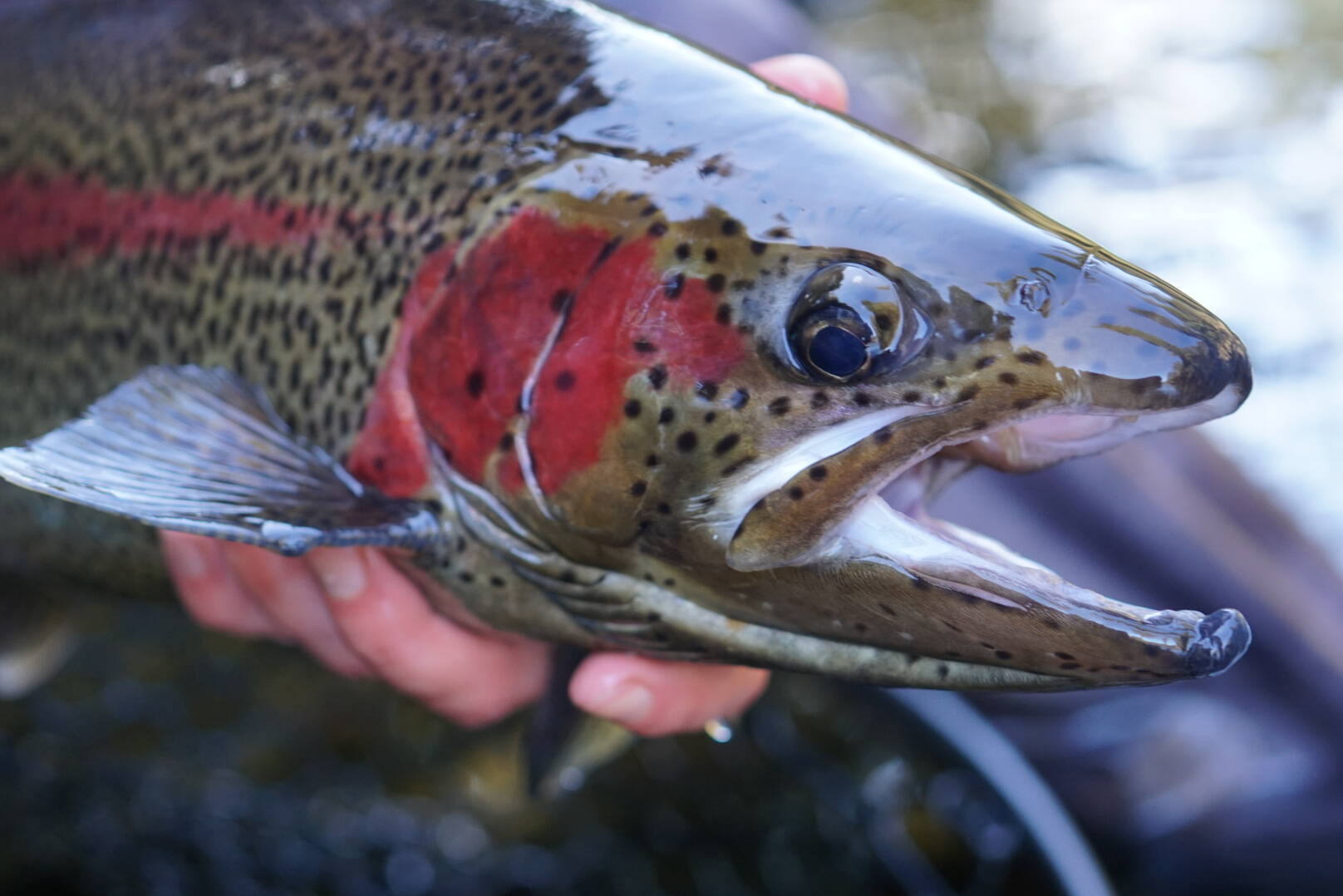The Forest Service cabin was a sauna so I went outside, stood at the edge of the lake and listened. We had hauled in some dry firewood in case the supply had been exhausted over the winter, but were happy to find a few rounds in the shed. I chopped with delight, remembering the skill I had honed as a kid growing up in a house with an inefficient wood-burning stove. The fire roared and the cool lair called.
We’re at the time of year when daylight lingers after dinner and I was happy to lose track of time because my impatience typically makes inactivity boring.
A few grouse hooted from atop spruce trees across the lake. Fast water making its way down rocky chutes was hidden in the forest somewhere. The lake was still except for a few cruising ducks and trout and/or salmon occasionally breaking the surface.
I thought about what it meant that this was still a lake. Not a reservoir. Reservoirs are typically ugly and make for poor beach access or boat launching. When people come to Alaska they want pristine habitat, not the same drowned forest they could get at home.
I get it. Most of the cheap, clean energy I use and water I drink comes from subalpine lakes that are dammed and I am grateful. But not this one. This one has a long history of use, but there is no dam. This lake has kept its original value by providing a link to lakes and tributaries upriver, and enough habitat to provide a robust environment for fish, anglers and people seeking solitude such as my wife and me. Opportunities to access a Forest Service cabin are major contributors to the quality of life that many Alaskans hold so dear.
I grew up thinking that anti-logging people liked owls more than humans and didn’t care if my friends were poor because their parents lost their jobs.
My parents were teachers on Prince of Wales Island, but a lot of my friends came from logging families and I absorbed the attitudes of people attempting to save their jobs and continuing to live where they wanted.
I’m not a kid anymore and understand that resource policy is complicated. Along with many others, I sit in a not-so-precarious spot in what I’d like to call the middle. It’s not precarious because life doesn’t have simple answers and sometimes there really can’t be an exact middle ground. You can’t compromise on the existence of something like Pebble Mine. There is one, or there isn’t. The middle is more an average-middle created by hopping back and forth across lines drawn by people hoping to cast you as friend or enemy. One or the other. Loyal or not.
Pebble Mine has more lives than a cat named Lazarus, but that comparison doesn’t really work because benevolence brought Lazarus back to life. Pebble seems more like a ravenous, habituated town bear attracted to fresh cookies in the kitchen. It just wants the cookies, but you know letting it in would completely wreck the house.
As projects and proposals birthed in varying visions of Alaska’s future are debated around the state, partisanship poisons the water. In the interest of vilification, some groups fail, or refuse, to distinguish key differences between an organization like Trout Unlimited, which champions responsible, sustainable use and works to protect spawning habitat, from environmental activists who throw tomato soup at priceless paintings.
As Alaskans we need to take advantage of opportunities in which compromise is possible and multiple user groups can benefit rather than take stands to impress Lower 48 interests that benefit personal careers or agendas.
• Jeff Lund is a freelance writer based in Ketchikan. His book, “A Miserable Paradise: Life in Southeast Alaska,” is available in local bookstores and at Amazon.com. “I Went to the Woods” appears twice per month in the Sports & Outdoors section of the Juneau Empire.

